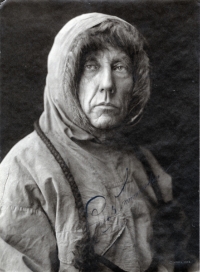
The first to sail through the Northwest Passage
In the summer of 1903 Amundsen sailed from Oslo with the ship Gjøa. The aim of the expedition was to find the Northwest Passage, for which the English had been searching for 400 years. Amundsen had a scientific goal: he wanted to measure the earth’s magnetic field and determine its exact location. The expedition had a 23-month stopover in Gjøa Haven on King William Island. While there, Amundsen studied how the Inuit lived and gathered a prodigious amount of ethnographic material. In the spring of 1905, Gjøa sailed onward and emerged at the other end of the Northwest Passage in August 1906.
North Pole expedition becomes South Pole expedition
Amundsen started preparing for an expedition to the North Pole, but when both Frederick A. Cook and Robert E. Peary claimed to have reached the Pole, in 1908 and 1909, respectively, Amundsen secretly changed his plans. In Madeira he revealed that the expedition to the North Pole would go by way of the South Pole. The race was on with Robert F. Scott to see which of them would be the first man on the southernmost point on earth.Amundsen reached the South Pole 14 December 1911, five weeks before Scott, who died on the return journey.
The Maude expedition and scientific work
In 1918 Amundsen finally set off for the North Pole with the vessel Maud. The expedition was equipped for oceanographic, meteorological and geomagnetic research and was at the time the largest, most well equipped geophysical polar expedition that had ever been mounted. The expedition never reached its geographic destination, the North Pole, but the geophysical data that were collected and interpreted – mainly by H. U. Sverdrup – have given the Maud expedition the reputation of being one of the most important Arctic research expeditions of all time.
